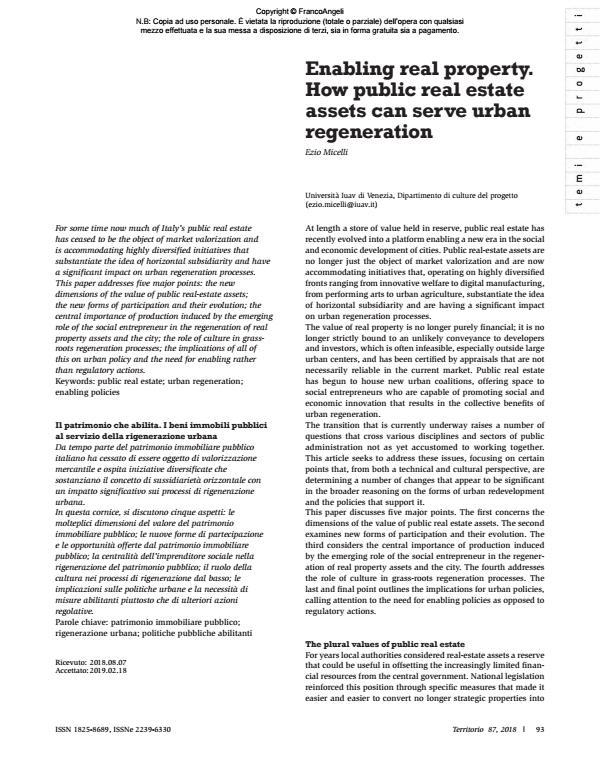Enabling real property. How public real estate assets can serve urban regeneration
Journal title TERRITORIO
Author/s Ezio Micelli
Publishing Year 2019 Issue 2018/87
Language English Pages 5 P. 93-97 File size 120 KB
DOI 10.3280/TR2018-087015
DOI is like a bar code for intellectual property: to have more infomation
click here
Below, you can see the article first page
If you want to buy this article in PDF format, you can do it, following the instructions to buy download credits

FrancoAngeli is member of Publishers International Linking Association, Inc (PILA), a not-for-profit association which run the CrossRef service enabling links to and from online scholarly content.
For some time now much of Italy’s public real estate has ceased to be the object of market valorization and is accommodating highly diversified initiatives that substantiate the idea of horizontal subsidiarity and have a significant impact on urban regeneration processes. This paper addresses five major points: the new dimensions of the value of public real-estate assets; the new forms of participation and their evolution; the central importance of production induced by the emerging role of the social entrepreneur in the regeneration of real property assets and the city; the role of culture in grassroots regeneration processes; the implications of all of this on urban policy and the need for enabling rather than regulatory actions.
Keywords: Public real estate; urban regeneration; enabling policies
- A Methodological Approach for the Assessment of Potentially Buildable Land for Tax Purposes: The Italian Case Study Fabrizio Battisti, Orazio Campo, Fabiana Forte, in Land /2020 pp.8
DOI: 10.3390/land9010008
Ezio Micelli, Enabling real property. How public real estate assets can serve urban regeneration in "TERRITORIO" 87/2018, pp 93-97, DOI: 10.3280/TR2018-087015